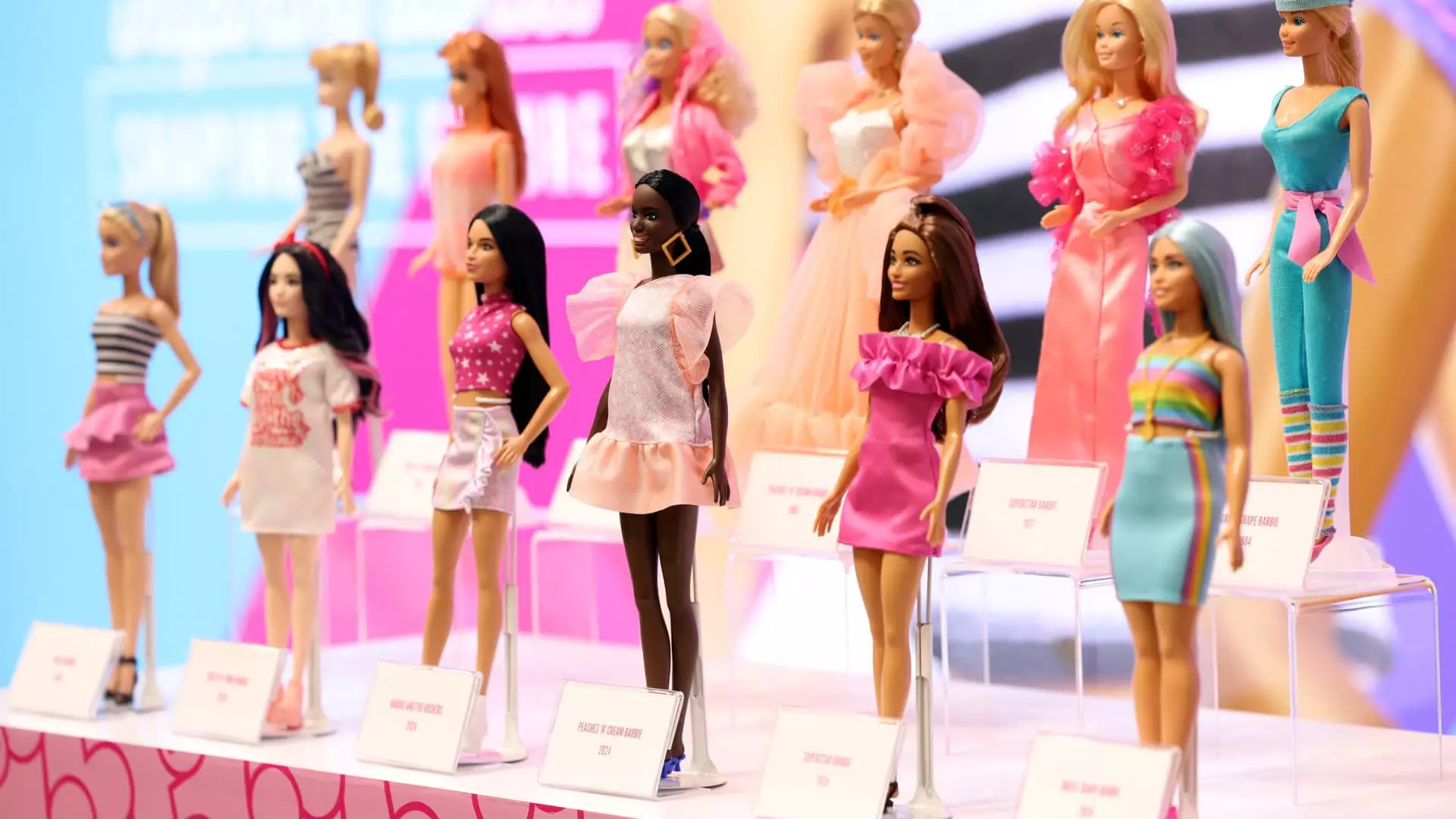In an era where cross-border trade dynamics are in constant flux, the toy-making giant Mattel finds itself at a critical crossroads. With escalating tariffs imposed by the Trump administration, particularly on Chinese imports, the company’s strategy for pricing its beloved products—like Barbie dolls and Hot Wheels cars—faces significant changes. As the company contemplates raising prices, analysts are left to probe the implications of these economic shifts on consumers and the broader market.
Mattel has revealed that approximately 40% of its toy production relies on China, a fact that has put the corporation directly in the crosshairs of new tariffs that could lead to increases in consumer prices. Following President Trump’s announcement of a 10% tariff on Chinese goods, Mattel executives have publicly discussed the possibility of adjusting their pricing model. During a recent earnings call, CFO Anthony DiSilvestro indicated that the company is exploring multiple strategies to mitigate tariff impacts, which may include cost-sharing with retail partners and price adjustments aimed at consumers.
This uncertainty over tariffs highlights a broader concern in the toy industry: how to maintain profitability in the face of increased production costs. With approximately 80% of toy goods sourced from regions affected by U.S. tariffs, companies like Mattel are exploring creative solutions to soften the financial blow.
One of the core strategies Mattel is employing involves a reevaluation of its supply chain. With a significant portion of its operations concentrated in China, the company acknowledges that diversifying its manufacturing footprint could be critical. Currently, Mattel operates factories across seven countries, which allows for a greater degree of flexibility in reallocating production resources to minimize tariff impacts. For instance, shifting more production to countries less affected by tariffs, such as some locations in Mexico, may serve to protect profit margins and serve consumer demands.
Moreover, Mattel’s long-term plans involve reducing its reliance on Chinese manufacturing. The company aims to decrease the proportion of its total global production sourced from China and Mexico from 50% to about 25% by 2027. Such moves not only mitigate risks associated with tariffs but also offer a buffer against fluctuating trade policies.
Despite the internal strategies to counter tariffs, an essential factor remains: consumer sentiment regarding price changes. Price hikes may not only deter customers accustomed to certain price points but could also tarnish the brand’s reputation if perceived as exploitative during challenging economic times. DiSilvestro reassured analysts that they would cooperate closely with retailers to ensure that any pricing responses would consider the consumer perspective.
However, both analysts and consumers must recognize that the competitive landscape of the toy market could exacerbate the impacts of these price adjustments. If Mattel raises prices, it risks losing market share to competitors who may not have to navigate similar tariff constraints.
The narrative surrounding tariffs is further complicated by the geopolitical environment. Trump’s decision to momentarily suspend a planned 25% tariff on goods from Canada and Mexico illustrates the complexity of these negotiations. The changing tide of trade agreements creates an air of uncertainty for companies dependent on global supply chains.
Economists from various factions suggest that the looming tariffs represent a harbinger of rising consumer prices across a wide array of products, not just toys. While companies like Mattel attempt to deflect costs from their day-to-day operations, the ultimate burden could very well shift to the consumer, impacting purchasing power in an already competitive economic landscape.
As Mattel maneuvers through the turbulent waters of international trade and shifting tariffs, the company faces a multipronged challenge: maintaining product affordability while safeguarding profitability. While the company is exploring avenues to alleviate the effects of pricing increases, the final outcome will hinge on not only internal strategies but also external economic factors. As consumers await the potential price hikes on their favorite toys, the entirety of the toy industry must remain vigilant in adapting to a landscape defined by volatility and unpredictability. Ultimately, the ability of Mattel and its competitors to pivot effectively in response to these pressures may determine their long-term viability in the market.


Leave a Reply